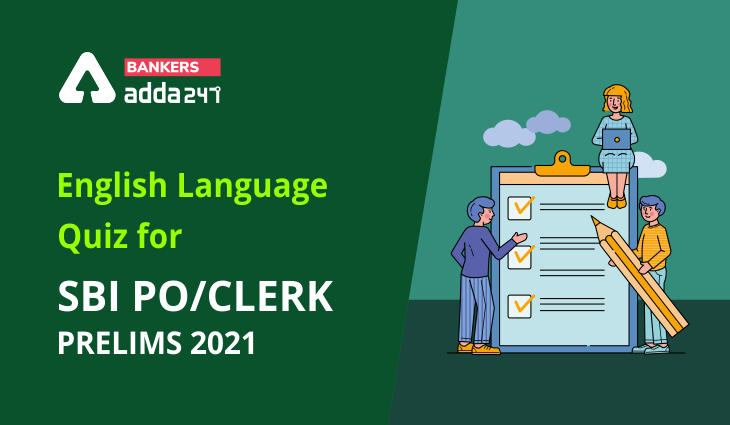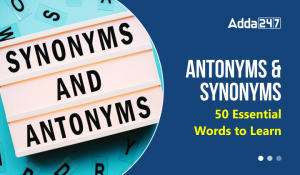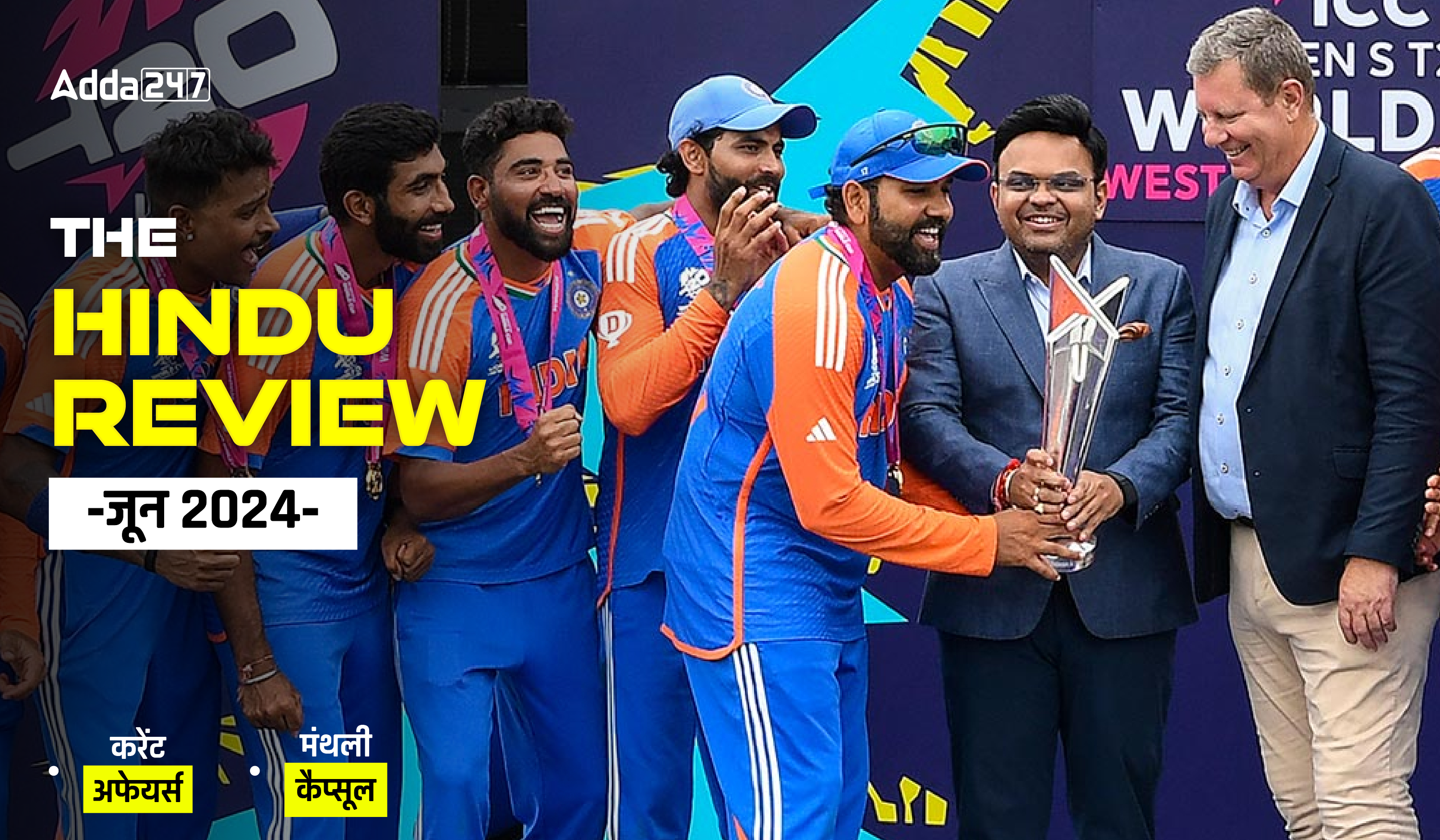Directions (1-10): Read
the following passage to answer these questions given below it. Certain words
phrases have been printed in bold to help you locate them while answering some
of the questions:
to affordable electricity for each and every household is a necessary condition
for social and economic development. However, rural electrification received
attention in the development agenda mostly in the last one-and-a-half decades.
In 2005, the Central government launched the Rajiv Gandhi Grameen Vidyutikaran
Yojana (RGGVY) which subsumed all
other ongoing schemes related to rural electrification. The scheme focused on
electrification of villages through implementation of decentralized distributed
generation (DDG). RGGVY was later included in the Deen Dayal Upadhyaya Gram
Jyoti Yojana (DDUGJY) (recently renamed the Saubhagya scheme), which
additionally focuses on feeder separation, improvement of sub-transmission and
distribution network, and metering to reduce losses. All these schemes have
delivered results and now only a few villages are left that have yet to achieve
the target of 100% electrification. As per the latest government statistics,
only 910 villages are yet to be electrified, which account for 5% of India’s
un-electrified villages (as on April 2015), excluding some uninhabited
villages. However, the performance of rural household electrification is not
that encouraging. Around 35 million households—approximately 11% of the total
rural households—are yet to be electrified.
success of rural electrification should not be measured only on the basis of
connections provided, but also on the basis of provision of reliable and quality power supply during
peak hours. Both these are still persistent problems faced by a majority of
India’s rural households. As per the United Nations Development Programme
(UNDP) recommended “Energy Plus” approach, supply of electricity only for
lighting is a necessary but not sufficient condition for rural livelihood
development. This framework emphasizes on energy access in combination with
productive use of electricity for income generation and livelihood upliftment. However, to use electricity
directly for income-generation activities, ownership of appliances plays an
important role, apart from market availability, financial and technical
assistance. Appliance ownership, in turn, depends on the household’s economic
status and on the quality and availability of power supply. This makes the
problem more challenging. Further, lack of access to energy at home and for
income-generating activities is associated with higher levels of poverty, low
productivity, heavy workload, women’s safety issues, missed educational
opportunities and high exposure to
health risks.
cost of power supply to rural areas is also significantly high. As a majority
of the rural households cannot afford high cost supply, utilities are reluctant to supply the required
quality and quantity of electricity in these areas. This is apart from the
issue of capacity constraint in terms of power generation/purchase. However,
implementing some appropriate measures such as smart meters, infrastructure
development, franchisee arrangements with local self-help-groups (for more
effective billing, monitoring and collection) may improve the situation to some
extent. The recent Saubhagya scheme
addresses some of these issues. It aims to improve environment, public health,
education and connectivity with the help of last-mile power connections across
India along with providing electricity connections to over 40 million families
in rural and urban areas by December. Households out of reach of the national
electricity grid are proposed to be provided with solar power packs along with
battery banks with the Rural Electrification Corporation as the nodal agency.
Q1.
According to the passage, Saubhagya Scheme aims to
(a)
Supply of electricity through dedicated feeders.
(b) improvement of metering and distribution network to reduce losses.
(c) Access to affordable electricity through implementation of decentralized
distributed generation.
(d) Both (b) and (c)
(e) All are correct
Q2.
What is/ are the problem(s) faced by Indian rural population nowadays?
(I)
Lack of sufficient appliances to access the electricity.
(II) Lack of reliable and quality power supply.
(III) Lack of connection provided for electrification.
(a)
Only (I)
(b) Both (I) and (II)
(c) Both (II) and (III)
(d) Both (I) and (III)
(e) All are correct
Q3.
The need of “energy plus” approach is to
(a)
use it for educational opportunities.
(b) avoiding high health risks.
(c) use electricity for income generation activities.
(d) provide women safety.
(e)
All
Q4.
How the problems can be resolved for easy access of electricity to rural
population?
(a)
By developing infrastructure
(b) By installing smart and effective machinery to the system.
(c) By launching some schemes aiming to improve rural electrification.
(d) By effective monitoring of the power supply.
(e) All of the above.
Q5.
The tone of the author in context to
the passage is
(a)
sarcastic
(b) didactic
(c) cynical
(d) critical
(e) Analytical
Directions
(6- 8):
Choose the word which is most same
in meaning of the word printed in bold in context of the passage.
Q6.
Subsume
(a)
abundant
(b) variegate
(c) integrate
(d) comprise
(e) consistent
Q7.
Reluctant
(a)
ardent
(b) anonymous
(c) grudging
(d) suggest
(e) enthusiastic
Q8.
Uplift
(a)
extenuate
(b) pacify
(c) abet
(d) mollify
(e) elevate
Directions
(9- 10):
Choose the word which is most opposite
in meaning of the word printed in bold in context of the passage.
Q9.
Reliable
(a)
conciliate
(b) dodgy
(c) persistence
(d) persuade
(e) incite
Q10. Exposure
(a)
candor
(b) dire
(c) subdue
(d) safety
(e)
proficient
Directions
(11-15): In the following passage against each number four words are suggested
in bold which may or may not fit into the sentence contextually. These numbers
are printed below the passage and against each, five options are given. Find
out the most appropriate alternative reflecting the word which doesn’t fit into
the blank appropriately and thus fail to give a contextual meaning to the
paragraph. If no such error is there mark (e) i.e. “all are correct” as your
answer choice.
(11) There is little surprise in the Law Commission of India recommendation that the Board of
Control for Cricket in India be brought
under the receipt of the Right to
Information Act. (12) Over the
years, the popular expectation that
India’s cash-rich and commercially successful apex cricket body will have to make itself more transparent and accountable has been reliving. (13) While the BCCI is a private body that needs no financial help
from the government, it is being increasingly recognised that it performs significant public functions. Even
though a five-judge Bench of the Supreme Court in 2005 held by a 3-2 majority
that the BCCI could not be termed an instrumentality
of the ‘State’ under Article 12 of the Constitution, subsequent developments have ensured that the public character of its functioning is widely
recognised. (14) In recent years,
especially against the backdrop of
the betting scandal that hit the Indian Premier League tournament a few years
ago, the vision that the cricket
board is functioning in an opaque manner
and not entirely in the game’s interest has
gained ground. (15) The Supreme
Court’s intervention led to the constitution of the Justice R.M. Lodha
Committee, which recommended sweeping
reforms in the board’s structure and the rules governing its administration. Many believe that implementing these
reforms at both national and State levels would impart greater transparency in its functioning and lead to an overhaul of cricket administration in
the country. The apex court also reaffirmed the public character of the BCCI’s
functions.
Q11.
(a) surprise
(b)
recommendation
(c)
brought
(d)
receipt
(e)
No error
Q12.
(a) expectation
(b)
apex
(c)
transparent
(d)
reliving
(e)
no error
Q13.
(a) recognised
(b)
instrumentality
(c)
subsequent
(d)
character
(e)
no error
Q14.
(a) backdrop
(b)
vision
(c)
opaque
(d)
gained
(e)
no error
Q15.
(a) sweeping
(b)
governing
(c)
impart
(d)
overhaul
(e)
no error
Also Read:
- SBI Clerk 2021: All Important Details
- SBI PO 2021: All Important Details
- SBI Clerk 2021 Study Plan
- For More English Quizes
S1.
Ans. (e)
Sol.
According to paragraph 1, Saubhagya scheme, previously named as Rajiv Gandhi
Grameen Vidyutikaran Yojana focuses on feeder separation, improvement of
sub-transmission and distribution network, and metering to reduce losses in
addition to electrification of villages through implementation of decentralized
distributed generation (DDG).
Hence
option (e) is the correct choice.
S2.
Ans. (c)
Sol.
In reference to second paragraph of the passage, we can infer that India’s
rural household are facing non- reliable power supply at peak hours and lack of
connection.
Hence
option (c) is the correct choice.
Refer
the first few lines of second paragraph “The success of rural electrification
should not be measured only on the basis of connections provided, but also on
the basis of provision of reliable and quality power supply during peak hours.”
S3.
Ans. (e)
Sol.
All the given options are correct.
Refer
third paragraph of the passage which indicates that “energy plus” approach is
not just providing electricity for lighting but also for other facilities.
Hence
option (e) is the correct choice.
“This
makes the problem more challenging. Further, lack of access to energy at home
and for income-generating activities is associated with higher levels of
poverty, low productivity, heavy workload, women’s safety issues, missed
educational opportunities and high exposure to health risks.”
S4.
Ans. (e)
Sol.
All the given statements are correct with respect to the third paragraph of the
passage.
S5.
Ans. (e)
Sol.
The author’s tone is ‘analytical’ as the author gave a detailed treatment of
the issue after undergoing deep analysis of the causes and effects.
S6.
Ans. (d)
Sol.
Subsumed means to consider or include. Hence it has same meaning as comprise.
S7.
Ans. (c)
Sol.
Reluctant means unwilling and hesitant; disinclined. Hence it has same meaning
as grudging.
S8.
Ans. (e)
Sol.
Uplift means to lift up, elevate. Hence it has same meaning as elevate.
Extenuate
means acting in mitigation to lessen the seriousness of guilt or an offence.
Mollify
means appease the anger or anxiety of.
Abet
means to help or encourage a person or thing to do something.
S9.
Ans. (b)
Sol.
Reliable means consistently good in quality or performance; able to be trusted.
Hence its opposite is dodgy.
Incite
meaning encourage.
Conciliate
means stop (someone) being angry or discontented; placate.
S10.
Ans. (d)
Sol.
Exposure means the state of having no protection from something harmful. Hence
it has opposite meaning as safety.
Candor
means the quality of being open and honest; frankness.
Dire
means extremely serious or urgent.
S11.
Ans. (d)
Sol.
The paragraph is describing about the
functioning of BCCI and meeting the expectation of maintaining transparency
with the public. However, the word ‘receipt’ means the action of receiving something or the fact of its being
received thus, to make the sentence grammatically and contextually correct
it should be replaced with ‘purview’ which is a noun and it
means ‘the scope of the influence or
concerns of something.’ Hence, option (d) is the correct choice.
S12.
Ans. (d)
Sol.
The paragraph is describing about the
functioning of BCCI and meeting the expectation of maintaining transparency
with the public. However, in order to make the sentence grammatically
correct and contextually meaningful replace ‘reliving’ with ‘rising’
as the sentence of the paragraph is expressing the increase in expectation of
maintaining the transparency with the public. Hence, option (d) is the correct
answer choice.
S13.
Ans. (e)
Sol.
As, the theme of the paragraph is about
the functioning of BCCI and meeting the expectation of maintaining transparency
with the public. The given set of bold words are correct and provide the
intended meaning to the paragraph. Since, no replacement is required option
(e) becomes the most viable answer choice.
S14.
Ans. (b)
Sol.
The usage of the word ‘vision’ is incorrect as ‘vision’
means the ability to think about or plan
the future with imagination or wisdom. It is to be noted that the sentence
of the paragraph is describing about an ongoing time [in recent years] therefore
the word ‘vision’ becomes incorrect as it gives an impression of a future plan
to be implemented. Thus, the correct word that should make the sentence
contextually correct is ‘view’. Hence, option (b) becomes the
most feasible answer choice.
S15.
Ans. (e)
Sol.
As, the theme of the paragraph is about
the functioning of BCCI and meeting the expectation of maintaining transparency
with the public. The given set of bold words are correct and provide the
intended meaning to the paragraph. Since, no replacement is required option
(e) becomes the most viable answer choice.


 English Language Notes for Competitive E...
English Language Notes for Competitive E...

